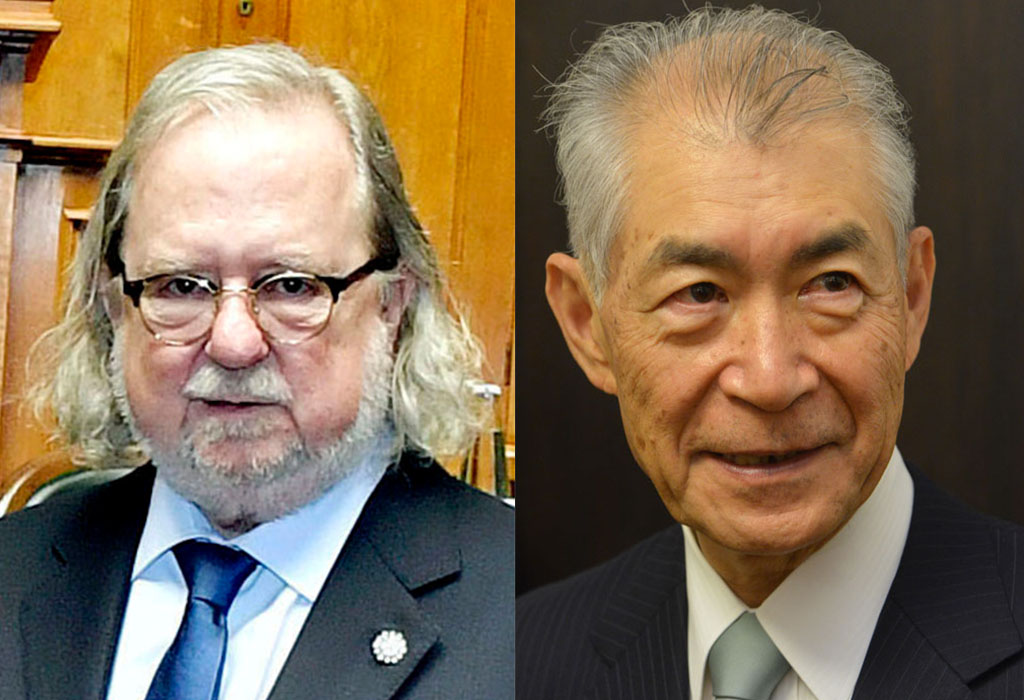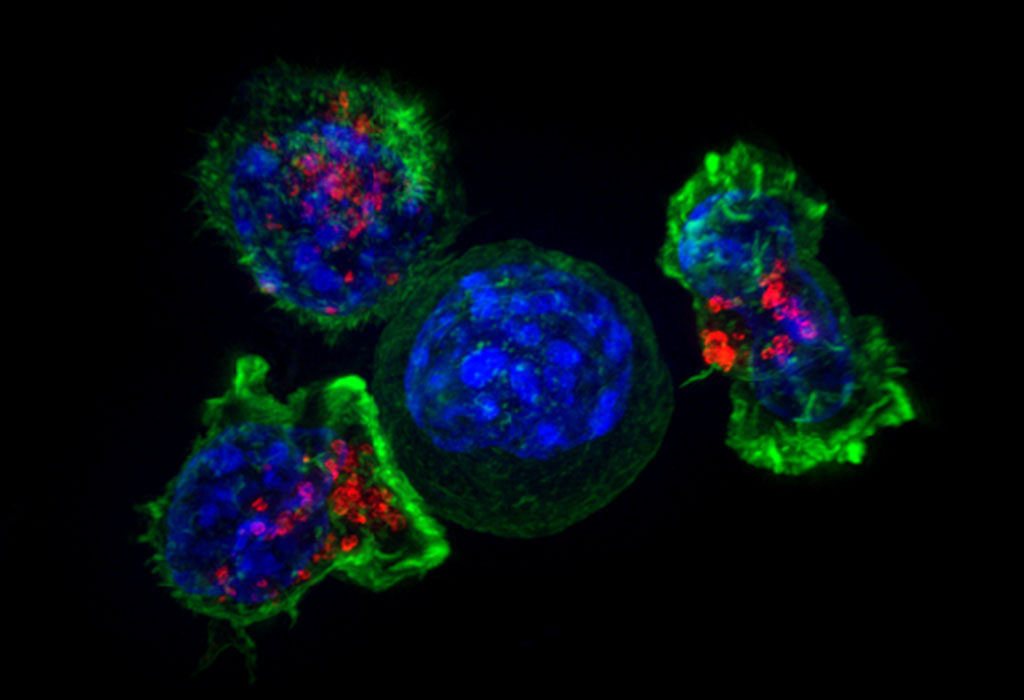Releasing the immune system’s brakes to fight cancer
We are able to harness the power of the immune system to successfully prevent some nasty diseases through immunisation—but what about other diseases such as cancer?
In the past decade or so, we’ve been increasingly able to do just that. Immunotherapy is now considered the ‘fourth pillar’ of cancer treatments, standing alongside surgery, chemotherapy and radiotherapy. Immunotherapy refers to a range of different ways to use the body’s immune system to fight cancer by increasing its capacity to seek out and destroy cancerous cells.
One of the most widely-used types of immunotherapy currently available involves a class of medicines called ‘immune checkpoint inhibitors’ for which we can thank the 2018 winners of the Nobel Prize in Physiology or Medicine, immunologists James P. Allison and Tasuku Honjo.

What’s a checkpoint?
The human immune system is incredibly complex. It’s made up of different types of cells, proteins and organs, each with their own specialised roles, all working together to find the best way to fight off anything that could make us sick.
There’s a lot of careful communication and coordination involved in making sure all the different players do their jobs properly. The immune system needs to be able to tell the difference between normal, healthy body cells (‘self’ cells) and threatening foreign invaders (‘non-self’ cells). Once a threat has been identified, the next question is where to send the immune system’s fighting forces—and how strongly should they attack?
A range of proteins, receptors and mechanisms help control when, where and how the immune system identifies and responds to threats. Most of these regulators are found on the surface of a subset of white blood cells called T-cells, which are the immune system’s key players for fighting off threats.
These proteins and receptors have different effects on the function of those T-cells based on how they latch onto other substances they encounter. Immune checkpoints function as ‘brakes’ to slow down or prevent the armies from being fully unleashed, while other proteins called ‘co-stimulators’ function as ‘accelerators’ to spur them on to take down the threat.
A healthy immune system will have just the right balance of brakes and accelerators operating to seek out foreign non-self cells but leave self cells alone. When this balance is out of whack, it results in autoimmune diseases or an inability to fight off infections.
Of course, even with all the right checks and balances between brakes and accelerators, there can still be problems, such as when foreign invaders find ways to hide from the immune system (as with HIV, for example) or when your body’s own cells start to malfunction and grow out of control: cancer.

A cancerous tumour can be a confusing thing for the immune system to deal with. On one hand, the immune system recognises that something’s not quite right: there’s a problem in the body and it needs to be dealt with. In a lot of cases, the T-cell armies are prepped and sent to the battlefield, ready for action.
But then, all the communications go haywire. Sometimes, crucial information about how they should attack those tumour cells doesn’t come through. Or they do get the go-ahead to attack and start looking for the tumour (they may even find it and start mounting an attack), but then another signal applies the brakes, weakening the response. Those T-cells get stuck in an endless loop of go-stop-go-stop-go until they become exhausted and dysfunctional. Meanwhile, the cancer continues to grow.
Inhibiting the inhibitors
Releasing the brakes is where checkpoint inhibitors come in. These treatments block the functions of the proteins that would otherwise send a ‘stop, don’t attack!’ message to the T-cells. The brakes are released, and the full force of the immune system is unleashed on the cancerous cells.
In the 1990s, James P. Allison and Tasuku Honjo each independently discovered how to release two of the immune system’s brakes to fight cancer. At the University of California, Berkeley, Allison and his lab worked with a T-cell protein called CTLA-4. Meanwhile, across the world in Japan’s Kyoto University, Honjo’s team was investigating another protein called PD-1. Both teams of researchers were able to pinpoint how each of these proteins worked as immune system ‘brakes’, while subsequent research found ways to ‘switch off’ their function.
The discoveries were revolutionary, leading to the development of effective treatments against cancers including melanoma, lymphoma, kidney and lung cancer. Clinical trials of the treatments showed very positive results, with some patients having no signs of any remaining cancer after treatment. For lung cancer and advanced melanoma patients, the treatments have dramatically improved recovery rates where previous approaches simply weren’t working.
Unfortunately, checkpoint inhibitors aren’t without their side effects (a no-holds-barred immune response can target healthy cells too, resulting in inflammation) and they won’t necessarily be effective for everyone. More research is still required to improve the effectiveness of the treatments and reduce their side effects. Thanks to the discoveries of Allison’s and Honjo’s teams, however, we have access to some very powerful weaponry in the fight against cancer.





